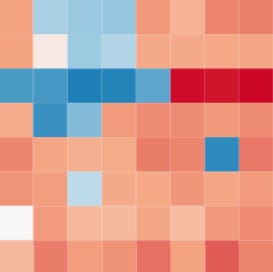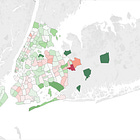Hey folks! It’s been a while since my last monthly update. Here is a summary of what’s been going on and future steps.
March Posts
In March, I wrote two posts. One on the idea of “data moves” in visualization and one exploring a new initial experiment using AI for data visualization.
The data moves post stems from a longstanding “itch” to clarify to myself first, and to my students next, how to think effectively about data visualization sequences. Most visualization pedagogy focuses on how to design a single chart, but in most practical applications, charts are used in sequences. For example, visualizations form a sequence and an associated narrative in presentations, reports, and even in data analysis. The data moves posts and tries to take the first step in this direction by explaining how we can transition from one chart to another by changing aspects of the chart itself.
This second post is an initial experiment to verify whether LLMs can detect common chart reasoning fallacies. In my Rhetorical Data Visualization course, I have a consistent catalog of chart reasoning fallacies, so I thought I could simply pick a few from my slides and see how ChatGPT (and other AI tools later) responded. The results are quite interesting. ChatGPT got two right and two wrong out of the four I tested it with. There is certainly space to do this way more systematically!
RhetVis Course Updates (New Cohort Open!)
In mid-March, I finished teaching the first cohort of my RhetVis course on Maven. The course went incredibly well and the feedback I received was very encouraging. Everyone was happy about the course and the students felt they have learned a lot.
If you want to read some of the participants’ feedback, I suggest you take a look at the bottom of the course web page. This is how that section looks.
The thing I am most happy about is how many reviews mention the idea of having received a useful “framework” to think about visualization from this course. This is the way I like to organize my courses, and I am happy it’s what the students feel like they have gained. I feel strongly that technologies come and go, but mental frameworks can last for a very long time.
If you are interested in the course, I suggest you take a look at the course website. Enrollment is open for the second cohort in May! So if you are sold on it, feel free to sign up. If you are undecided or have questions, feel free to contact me by replying to this email (if you are reading from your email), leaving a comment below, or sending me a message using the Substack chat.
In the next few weeks, I will also organize one or maybe two free webinars. To promote the course. If you are interested, stay tuned! I will send an email to all my newsletter subscribers.
Vis+AI Meetups
Last Thursday, we launched a new initiative: the Vis+AI Meetups. These are local gatherings with invited speakers to talk about the intersection of data visualization and artificial intelligence. I will write a specific post about the event. Here I just want to share that we will keep organizing the event on a monthly basis to stimulate discussions and to build a community of people who work in this area. The format always includes one speaker from industry and one from academia. Our first speaker was Fritz Lekschas from Ozette Technologies, who talked about how they are using LLMs to develop chatbots that can guide people performing data analysis with their biomedical platform. Our second speaker was Shivam Raval from Harvard, who spoke about the use of analogies in AI. Shivam is also a co-organizer of the event together with our student Shani Spivak and Tufts student Camelia Brumar.
If you are interested in participating, watch for announcements on LinkedIn. I will always announce new meetups there. We could not stream or record the talks for this first meetup, but we plan to make this possible in our future meetups. If you want to be a speaker and present your work, please reach out to me (via email, chat, or comment below)! We are especially interested in people who mix visualization and AI in industry or government settings.
Future Plans
The most immediate thing you will see from me is a focus on building the second cohort of RhetVis. I will also do my best to get back to a regular schedule of one post a week. The last two to three months have been way more challenging, but I feel I am slowly getting back to a regular schedule. On the back burner, I have a new set of video lectures that I started developing in January and could not complete. But I am very close to completing the whole series. As soon as I am done with my university course and other duties, I will be able to complete it. More in general, I want to develop new courses in the Maven platform. I am really happy about how the platform works and the service I can give people. Stay tuned for more updates in May/June!
On a different note, I have to get back to developing my post series. I have been disconnected from them for a long time and have to figure out what I want to do next. But, as I have said in the past, I want to continue developing post series because they can provide readers with a more long-lasting corpus of knowledge.
That’s all for this month. I look forward to connecting with more of you in the coming month!
Take care,
Enrico.






